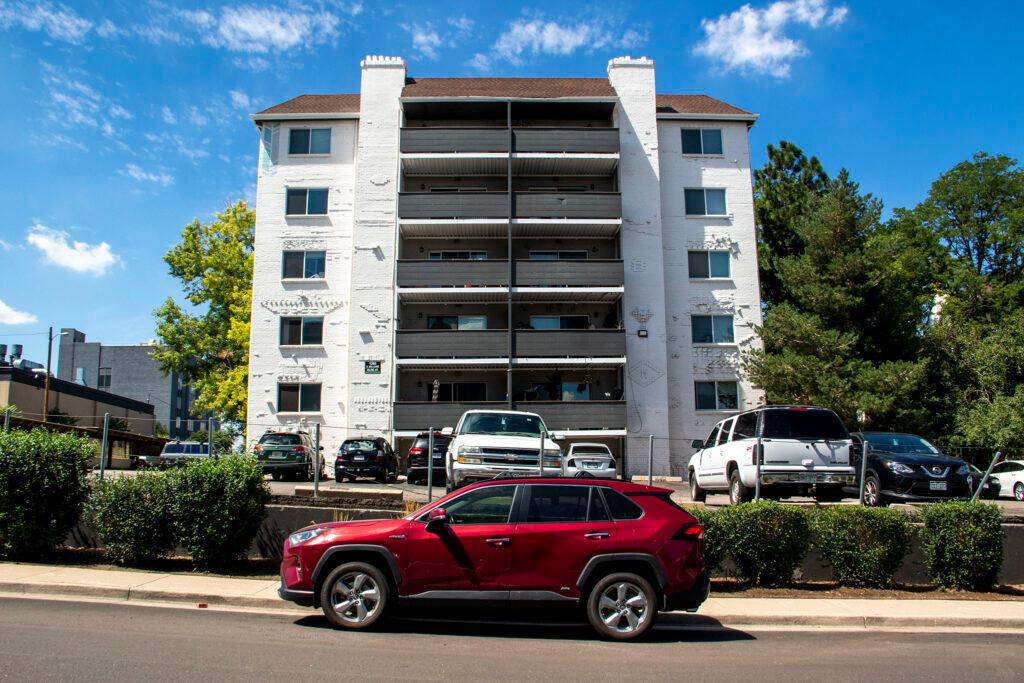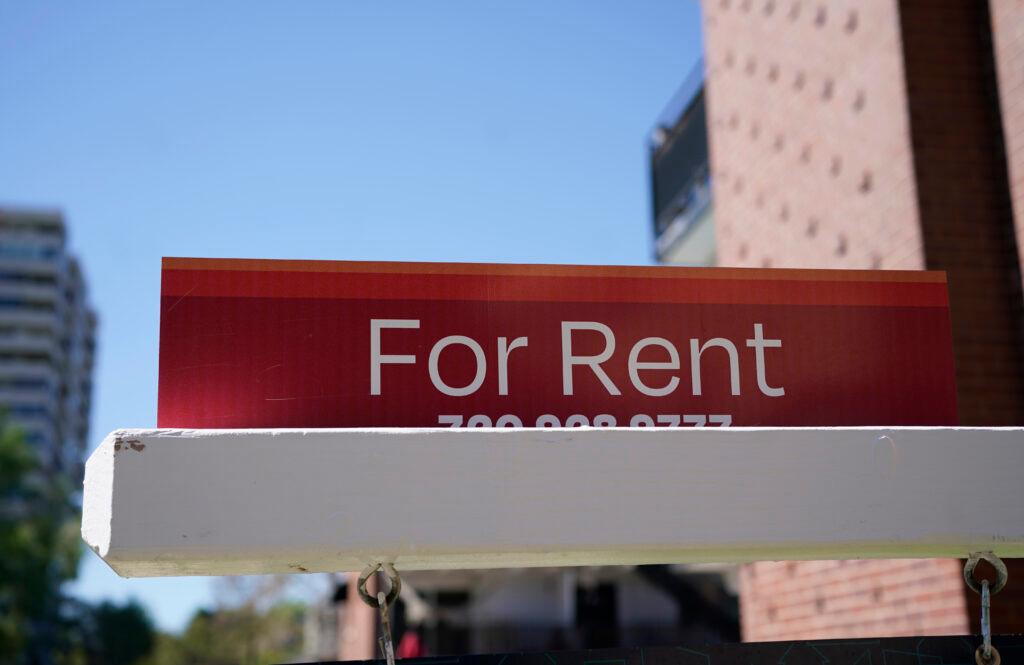
A proposed new law in Colorado would allow cities and towns to set limits on rent prices.
Supporters say the change would protect renters from the rapid hikes in housing costs that have marked the last decade. Critics argue that rent regulation, also known as rent control and rent stabilization, could cause unwanted disruptions to the already messy housing market.
To make their arguments, both sides are drawing on research from a century of rent regulation policies in the U.S. and trying to predict how it might play out in Colorado’s cities.
Here’s what we know about how rent control has worked in the past.
What’s being proposed in Colorado?
Currently, local governments in Colorado are not allowed to set limits on rent for privately owned buildings. The bill in the state legislature would change that, allowing cities to pass their own rent control laws.
But the bill would not give cities a blank check.
Cities would not be allowed to simply freeze rents at their current levels. Instead, they would have to allow rents to grow by a certain amount each year. Under the current proposal, landlords would still be allowed to raise rents by at least the rate of inflation, plus 3 percentage points each year.
Also, local governments could not apply rent regulations to new development, although they could still push developers to include affordable units. And in general, cities would have to apply their rent control policies uniformly, so that similarly aged and located buildings would be treated the same.
Where else have rent regulations been tried?
Government involvement in rent has a century-long history in the U.S. The first major rent control policies were instituted at the federal level during World War I and World War II, creating strict limits on rent and other costs as part of the war effort.
“Landlords were told they must be patriots,” said Dennis Keating, professor emeritus of urban studies and law at Cleveland State University.
Federal price restrictions ended in 1950. But one notable place, New York, passed its own law, setting strict limits on rent. Unlike more recent laws, it did not allow for automatic, regular rent increases.
The law quickly led to a patchwork of rent levels for different buildings.
“It wasn't systematic. It was landlords petitioning for various increases. So I would agree that was not the best system,” Keating said.
Those early limits were set “without any consideration for the landlords’ rate of return,” wrote the authors of a study in the Journal of Urban Affairs.
A new wave of rent laws — known as the second generation — emerged in the late ‘60s and ‘70s. Tenants became an organized political force in California and New Jersey, where they convinced dozens of cities to enact rent regulations, as well as Massachusetts, Virginia, Florida and Washington, D.C. The state of New York also updated its legislation.
“You were basically faced with the threat of being priced out of the city,” said Keating, who worked on the campaign for rent regulation in Berkeley, Calif.
This second generation of laws was known as “rent stabilization.” They were meant to be more flexible than the earlier “rent control” laws.
The policies generally included exemptions for new development, and they allowed yearly rent increases. Some also included “vacancy decontrols,” allowing an apartment’s rent to return to market rates when it was vacated.
The idea also spread to Colorado, where organizers in Boulder began to push for rent stabilization more than 40 years ago. That effort was cut short, though, as opponents to rent control got more organized, too. Lawmakers in 37 states, including Colorado, ended up banning the use of rent control. Keating says those changes were largely driven by real-estate interests.
Today, only seven states and Washington D.C. have rent regulations at the state or local level. Most states explicitly ban rent control.
But rent regulations have started to regain political momentum as housing prices have risen recently. In 2019, California and Oregon both passed statewide rent stabilization laws, which say that rent on many buildings can only increase by a certain amount per year.
Those new laws are more generous to landlords than previous policies, allowing rents to rise at rates higher than inflation (although California allows cities to set more stringent caps). Colorado’s proposal is similar, in that it allows rent to rise faster than the rate of inflation. But instead of creating a statewide policy, the bill would leave the power of rent regulation in local hands.

What does the research say about the effects of rent control?
Economists and researchers have long documented the negative side effects from various rent laws, but they’ve also found benefits for people in rent-regulated apartments.
For example, several studies have found that restrictions may lead landlords to take worse care of their buildings.
“The literature is almost unanimous with respect to the impact of rent control on the quality of housing,” states one research literature review in the German Institute for Economic Research.
It continued: “The landlords, whose revenues are eroded by rent control, have reduced incentives to invest in the maintenance and refurbishment, thus letting their properties … wear out until the real value of the dwellings decreases and becomes equal to the low real rent.”
This lack of investment can have widespread impacts on property values. A 2012 study of Cambridge, Mass. found that when the city’s rent controls were abolished, it led property values to rise by $1.8 billion. Values of both rent-controlled and non-controlled buildings were affected — showing that rent control had “spillover” effects, the authors argued.
Rent controls may also discourage the construction of new housing in some cases, which would exacerbate existing shortages, critics argue. More than half of the studies in the German research review found negative effects on residential construction — however, others found no change.
That’s likely a result of the different ways rent laws are designed, according to the research review. Newer policies, including the Colorado proposal, try to avoid that effect by making exemptions for new development and allowing more generous rent increases.
Colorado wouldn’t allow cities to regulate rent for the first 15 years after a building is constructed. It also allows landlords to raise rents to cover the costs of building improvements.
But even with exemptions like that, rent control laws can have unintended consequences. A detailed 2018 study of San Francisco found that property owners escaped rent control by redeveloping their buildings or converting them to condos.
“In the long run, landlords’ substitution toward owner-occupied and newly constructed rental housing not only lowered the supply of rental housing in the city but also shifted the city’s housing supply toward less affordable types of housing that likely cater to the tastes of higher income individuals,” the study declares.
More recent rent laws have tried to avoid those effects by offering more generous allowances to landlords. San Francisco only allows rents to increase at 60 percent of inflation. In comparison, California and Oregon allow rents to increase faster than inflation, as would the Colorado proposal.
The greatest benefits go to existing tenants
Researchers have found rent control laws can achieve some of their goals, especially when it comes to benefitting the tenants in rent-controlled housing.
The San Francisco study found that tenants in rent-controlled units were more likely to stay in the city, and that included slowing displacement in communities of color.
Meanwhile, another widely cited study found that New Jersey rent control laws may have avoided some of the problems of other policies.
The New Jersey study found that in 60 cities in the state, rent control “did not significantly affect” most measures of housing cost, quantity and quality. Jersey City allows rent increases up to 4 percent, higher than what San Francisco has allowed in most recent years.
“Our study shows that, as a moderate type of rent control, the rent regulations in New Jersey may have avoided some of the negativity of the conventional regulations,” the authors wrote.
The tradeoff, they wrote, may be that New Jersey laws are so lax that they have little effect on rent costs. But they still found benefits for existing tenants.
“At best, it appears that most (New Jersey) rent control ordinances have only succeeded in preventing rent increases that are excessive,” they wrote, adding: “These ordinances have also provided protection against arbitrary evictions, incentives for maintenance of rentals, and knowledge to tenants about the level of rent increases to expect in the future.”
One study also found that renters in controlled units are also more likely to ask for repairs to the property.

Advocates say it’s an anti-gouging measure
Sponsors of the Colorado bill argue that they don’t want to see overly strict, market-changing policies. Instead, they hope local rent control would prevent price gouging and allow renters to stay in their communities for longer.
“Rent control is not a policy to develop more affordable housing. It is a policy to stabilize people where they currently are,” said Rep. Javier Mabrey, a Democratic sponsor of the bill.
He described rent stabilization as a short-term solution “to prevent unnecessary displacement, keep communities together, and make sure kids can stay in the neighborhoods where they've been going to school for years.” He argues it can be paired with land-use reforms and other strategies to encourage housing development for a long-term solution.
More broadly, when it comes to governments getting involved in the market, “the trend is towards looser rent regulation,” said Sophie House, director of law and policy at the Housing Solutions Lab at New York University’s Furman Center.
The idea is to “protect tenants from these kind of really destabilizing sort of rent shocks, while just limiting … the less desirable or unintended consequences of rent regulation.”
But she added that rent control laws are often poorly targeted, meaning that their benefits aren’t focused on lower-income people. She said that regulations should be paired with more vouchers and subsidies to help lower-income households pay the rent.
J.W. Mason, an economist at John Jay College, argues that new laws can be designed to sidestep the pitfalls of older policies — for example, by limiting landlords’ ability to convert rent-controlled apartments into condos. (Colorado’s proposal wouldn’t currently require that.)
Mason also argues that rent regulation can help to minimize disruptions in changing areas, ensuring that renters aren’t torn out of the social fabric — and that cities don’t lose their workers.
“Rent regulation removes these conflicts between the social interest in thriving, high-wage cities and the interests of current residents. This makes it an important component of any broader urban development program,” he wrote.
What’s next?
The Colorado rent control measure has only attracted Democratic votes so far, but it cleared the state House with a strong majority — the first time that such a measure has gotten approval from a chamber of the legislature.
Now it heads to the Senate, where it may face a tougher time. The bill would have to get approval from a Senate committee, where a single Democratic no vote would be enough to end it, before going to a vote before the full Senate.
The policy also faces resistance from Gov. Jared Polis, who has said he is “skeptical” of rent control and is not convinced it will contribute to his goal of a greater housing supply.
“As a data-driven person, I've seen the fact that [rent regulation is] associated with some of the highest rent areas of the country,” Polis said when asked recently about the bill. “Obviously I'd be very wary of anything that would reduce the new supply of housing for rent or for purchase.”
Polis has the ultimate power over legislation. Even if it passes the legislature, Polis could block the bill by vetoing it.









